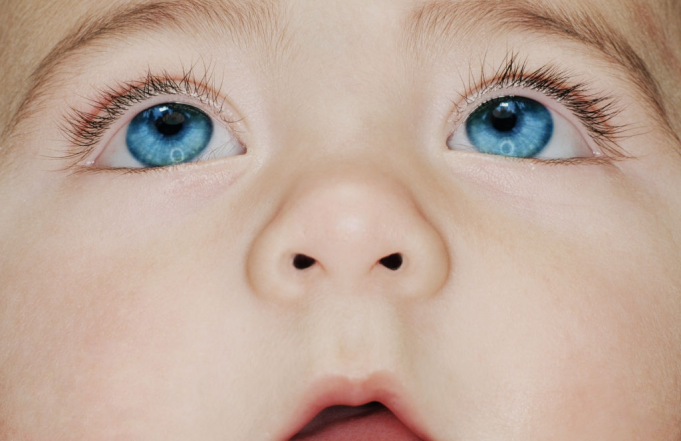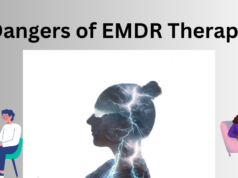Whenever a new baby is born the thing that generates the curiosity of each parent is the eyes color of the baby. We can still argue that baby’s eye color is one of the first things that parents notice when their babies born. Technically, the color of the baby’s eye is decided by the mix and match of each parents’ contribution. However, the color is not very easy because two different colors can mix in different proportions to produce different colors.
Before going any further, we would like to make sure that you are not too obsessed with your baby’s eye colors because having a desire is completely fine having an obsession is not ok. Today, we will be talking about everything that you must know about the baby’s eyes color starting from the process of color formation in babies to other relevant factors. Let’s get started.
Process of Eye Color Formation
Generally speaking, many Hispanics, Asian and African-American children are born with dark brown or brown eyes and to some people, these colors may even look black. For Caucasian baby’s eye color is usually greyish blue. The truth is the actual color of the baby’s eyes cannot be determined until after few months after the baby is born.
In easy terms, we want to say that the color of the baby’s eyes would be different at birth but it could vary after the baby’s color-producing cells in the iris gets in contact with light. Iris is located behind the eye’s cornea which is responsible for appropriating the size of the pupil to let the light come in.
One might wonder how many months does this color-changing process take before we can certainly determine the baby’s eye color. Well, usually the process can last up to 6 months but keep in mind that this is not fixed as the process of color-changing could even last up to the age three in the case of some kids and for other exceptional cases, the color-changing process may even continue till adulthood.
The use of Melanin
If you are not new to this research then you might have heard about melanin. In layman terms, we can say that the color of an eye is determined by melanocytes that are those cells that secrete the melanin protein whenever it is required. As the time passes by if you find out that your baby is having Blue eyes that denotes that the melanocytes are providing only a small amount of melanin protein if they provide little bit more melanin the baby’s eyes colors would be Hazel or green and if these are producing a lot of melanin then your baby will have brown eyes.
The baby’s genetic role
Now that we have understood that the color formation depends largely on the basis of how much melanin is produced by the melanocytes, it is important to understand that this amount is heavily influenced by the child’s genetics and most importantly the two genes – one that has blue and brown versions and the other that has green and blue versions.
Upon the different combination of these that they inherit from the parents, one might wonder, then what about other eye colors like violet, hazel, or grey. The truth is these other multiple combinations are not completely understood at this point.
Regardless of the lack of success in the research, we have following things that we are sure about being certain – like if both the parents have really dark eyes then the baby will have dark eyes as well because no matter which combination he possesses it will most likely be dark because the well dark color is highly dominant in that case. But there are some cases that show us that the baby has Blue eyes while both are the parents have brown eyes color.
However, from the scientific point of view, this is not explained as well but the possibility of this happening cannot be denied as well. Basically, there can be two positions attributed to the elders of the parents that are dominant and recessive and it is on those that determine the color of the baby’s eyes.
Predicting your baby’s eye color
As we have mentioned above, many people are interested in the color of their baby’s eyes even before they are born. So in the next segment, we will be talking about a few tips that you can use while predicting your baby’s eye color but do not overlook all that we have said earlier about the science not being exact as these predictions can be wrong. We will provide you some general scenarios regarding the eye colors as follows:
- If both of the baby’s parents have eyes with blue color, it is highly likely that the baby will also possess blue colored eyes but keep in mind there is a high level of exceptions to this assumption.
- In the same way, when both of the parents have brown colored eyes the odds of the baby also having brown eyes is significantly high but there are some exceptions to this rule as well. For example, the eye color of the grandparents.
- If the case is not that similar and one parent has blue eyes while the other one has brown eyes then we would have to say that the chances are 50-50 that your child will have blue eyes.
It is also important to know that through the process of color-changing of the eye it is highly probable that the color will go from light to dark. You can use this in your predictions as well. If the baby initially has blue colored eyes then the probability of him having brown hazel, or green color eyes is very high, and in similar terms, if the baby has brown eyes the chances of the eyes becoming blue are very rare.
Overall, we have to admit that predicting your baby’s eye color is a much more complicated process and as a normal parent just looking at your eyes will not be able to provide you with concluding evidence that the baby’s eye colors will be of a certain color.
Are Blue eyes weaker than brown eyes?
As per a few doctors, people that have green, grey, or blue-colored eyes are likely to be more sensitive to light when compared with people with black or brown eyes. Apart from this, it is also believed that people with comparatively lighter eyes are more likely to suffer from light sensitivity or photophobia, and issues similar to that.
The science behind this is the sensitivity of eyes, in this case, is because of the less pigmentation in multiple layers of the eye which in turn reduces their ability to block out the effects of sunlight or bright lights. In all respects, it stands true, but you must keep in mind that regardless of the baby’s eyes color, it is always the best option to protect your baby’s eyes using sunglasses whenever you are outside.
Talking about sunglasses, you should look for sunglasses that include both UVA and UBA protection so that the safety of your baby’s eyes is not compromised.
Baby’s eye safety
it must be kept in mind that regardless of the color of your baby’s eyes their eyes are still very sensitive. You will have to take important steps in the first months after birth to make sure their eyes are not damaged. During the initial few months, there will be slight discharge from the eyes of the baby and you will have to use a warm cotton ball to wipe the discharge away. Also, make sure to constantly wash that cloth.
Another thing to keep in mind is that you must always be aware of the things or toys that your baby is playing with as babies do not have high muscle control and can hurt themselves and their eyes easily. If they hurt their eyes at such a tender age, results could be disastrous and can even lead to permanent vision loss.
Lastly, you need to keep in mind that you pay attention to the baby’s eye alignment. During the first few months, it is natural to have a slight misalignment but if the issue continuous even after 3 months of age, you can talk to a pediatrician who can even refer to an ophthalmologist.
Other considerations
You must keep in mind that if your baby’s eye color doesn’t match with your personal desire, that is not something you should be worrying about, because that eye color is now your baby’s eye color and you just need to love them regardless.
.


















